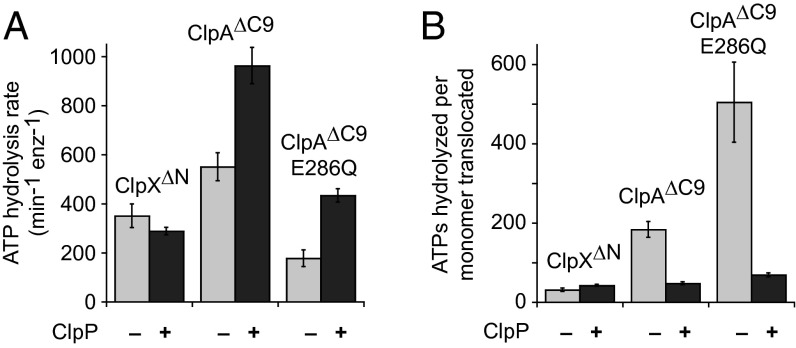Fig. 6.
Energetic efficiency of unfolding and degradation. (A) Rates of ATP hydrolysis by ClpX∆N (0.2 µM), ClpA∆C9 (0.08 µM), or ClpA∆C9/E286Q (0.2 µM) were measured in the presence of saturating concentrations of Arc-Gcn4-ssrA dimer (≥15 µM) plus or minus ClpP (0.4 or 0.8 µM). Values are averages (n = 3) ± SD. (B) The energetic efficiency of Arc-Gcn4-ssrA unfolding (minus ClpP; ATPV/unfVmax) or degradation (plus ClpP; ATPV/degVmax) for ClpX∆N, ClpA∆C9, and ClpA∆C9/E286Q, where ATPV is the rate of ATP hydrolysis in the presence of saturating substrate with or without ClpP; unfVmax is the Vmax for unfolding obtained from the Michaelis–Menten fits in Figs. 2C and 3 C and E; and degVmax is the Vmax for degradation obtained from the Michaelis–Menten fits in Fig. 5 D and E.

